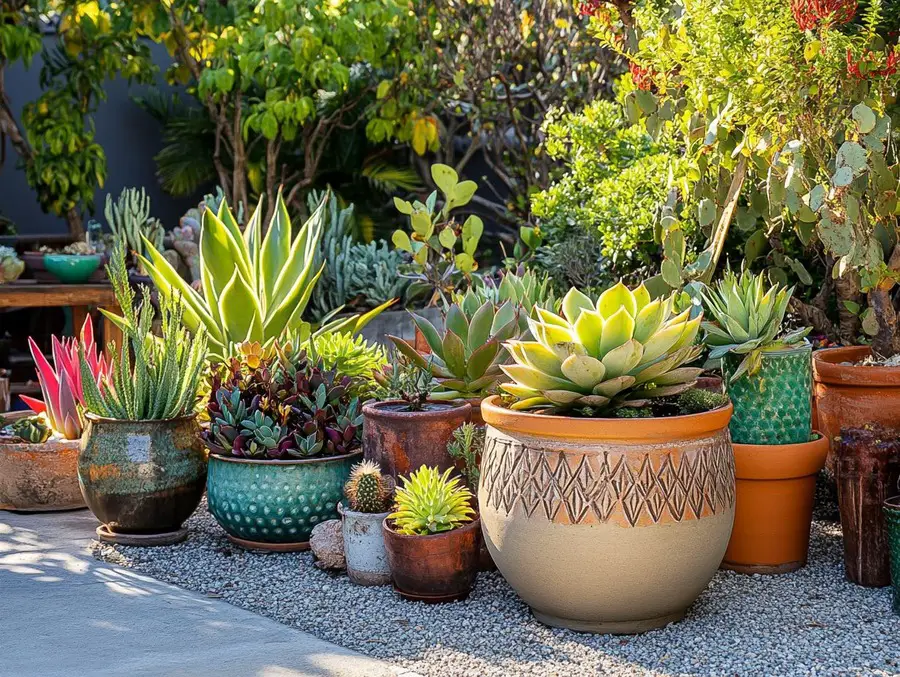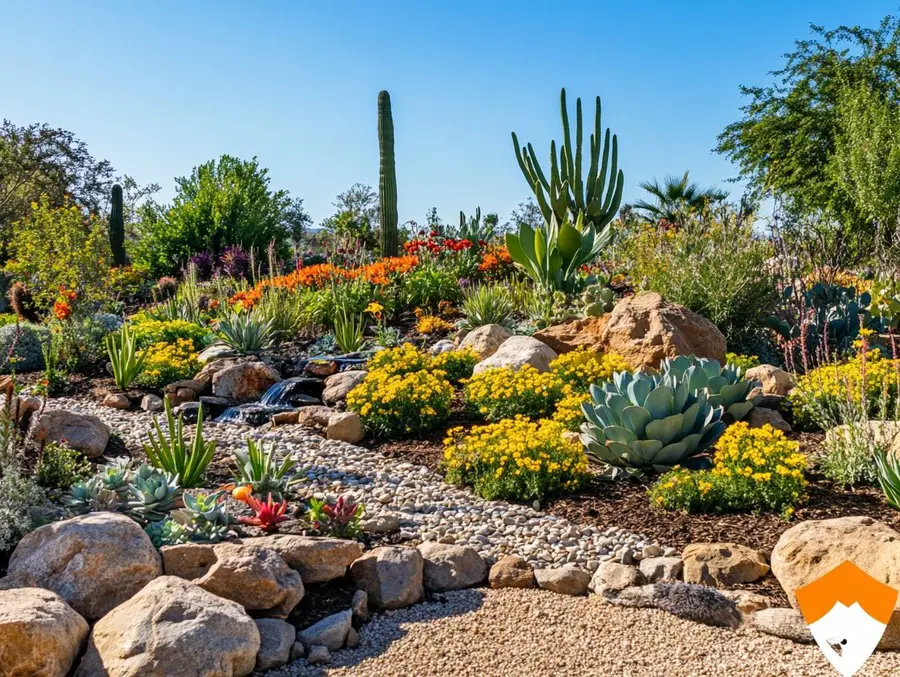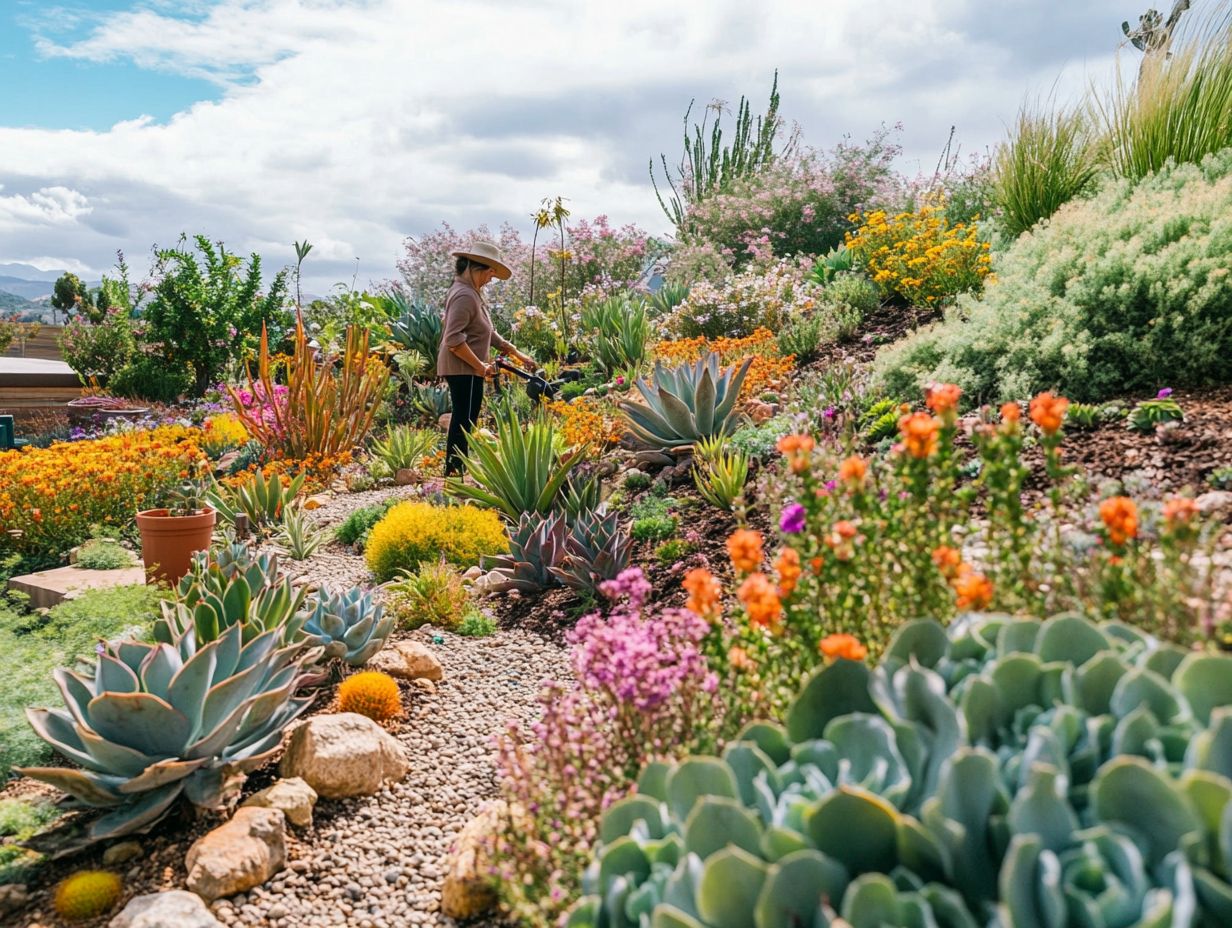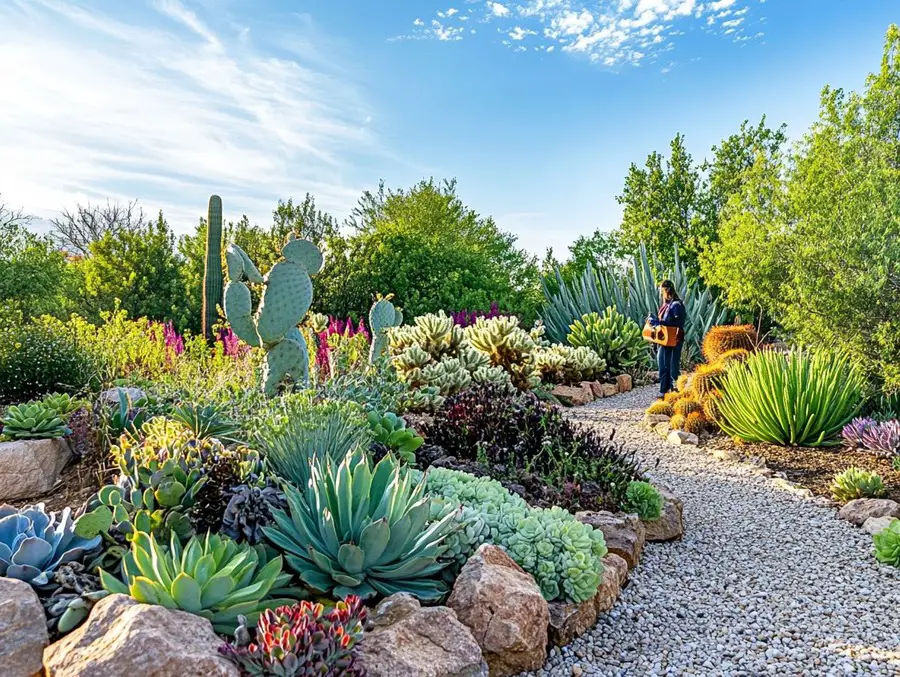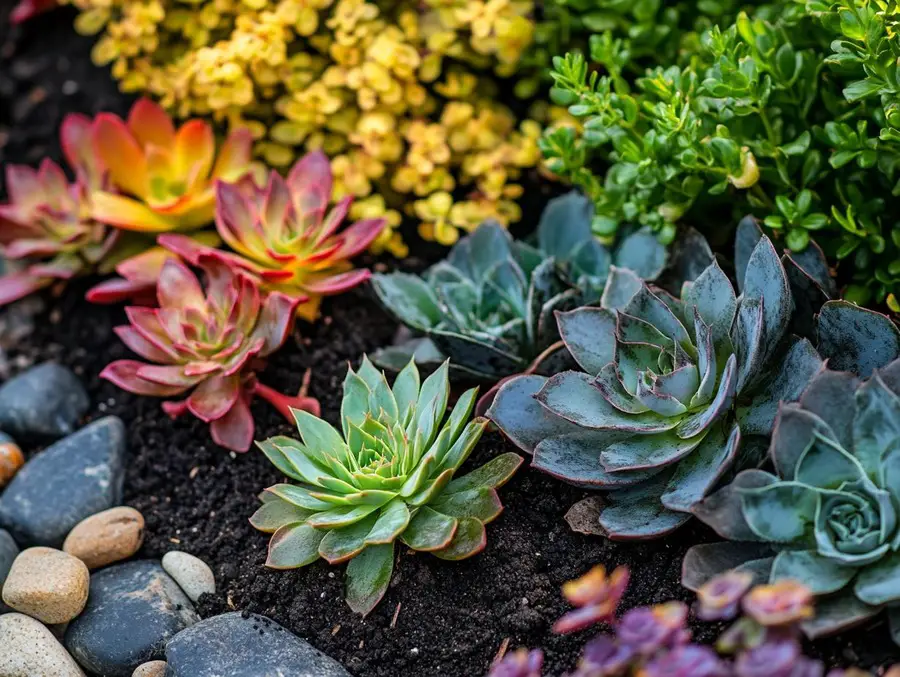We use affiliate links. If you purchase something using one of these links, we may receive compensation or commission.
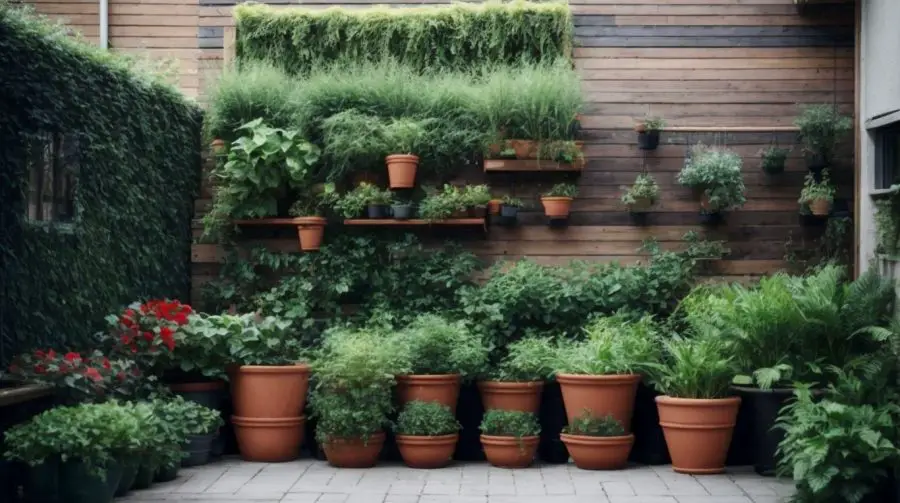
Explore small space gardening solutions for backyards, balconies, patios turned into lush green oases with creative techniques for growing plants.
Small Space Gardening Solutions
Key Takeaways:
- Small-space gardening offers ways to grow plants in tight spots.
- Techniques like vertical gardening, container planting, and windowsill gardening let you grow herbs, veggies, and flowers in small areas.
- By using vertical space and choosing compact plants, you can make a lush garden in any small outdoor or indoor space.
Are you looking to bring a touch of greenery into your home but feel limited by space?
Look no further than small-space gardening solutions! These innovative approaches allow you to grow a variety of plants, herbs, and even vegetables, regardless of the size of your outdoor area.
From vertical gardens to container planting, discover how you can turn any small space into a thriving garden.
Small Space Gardening Solutions
Are you a plant lover with limited space for gardening? Small space gardening might just be the solution for you!
We will explore the importance of small space gardening, its benefits, challenges, and various types such as container gardening, vertical gardening, windowsill gardening, and raised bed gardening.
We will also discuss the essential tools needed, how to choose the right plants, and provide creative ideas to maximize your small gardening space.
Whether you have a tiny balcony or a small window sill, there are plenty of ways to bring greenery into your home.
What Is Small Space Gardening?
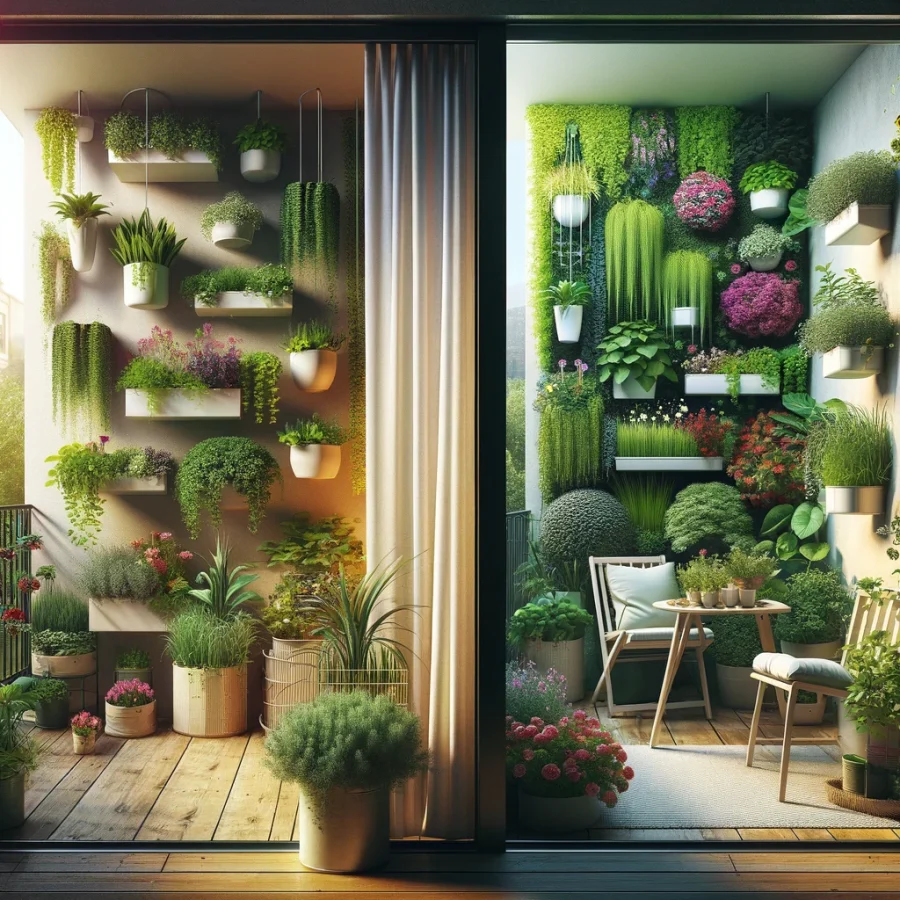
Small space gardening refers to the practice of growing plants, vegetables, and herbs in limited or confined areas, such as balconies, patios, or even indoors.
This trend has gained popularity in urban gardening, where individuals seek to maximize their living spaces by integrating natural elements.
By utilizing creative planting techniques and containers, small space gardeners can cultivate a variety of plant varieties suitable for confined spaces.
You can grow herbs like basil and mint, compact vegetable varieties like cherry tomatoes and lettuce, and flowers such as petunias and marigolds.
Balconies and patios, often considered unused spaces, can be transformed into vibrant green oases, adding beauty and freshness to urban environments.
Why Is Small Space Gardening Important?
Small space gardening plays a crucial role in maximizing available space for cultivating a variety of plants, vegetables, and herbs, especially in urban environments where space is limited.
Optimizing every inch of available space through small space gardening not only allows urban dwellers to enjoy fresh produce but also promotes sustainability and self-sufficiency.
By cleverly utilizing vertical gardening techniques, compact container gardens, and creative plant arrangements, individuals can create lush green oases even in the tightest of spaces.
The beauty of small space gardening lies in its ability to provide a diverse range of plants despite spatial constraints, offering a plethora of options from vibrant flowering plants to nutritious vegetables.
What Are The Benefits Of Small Space Gardening?
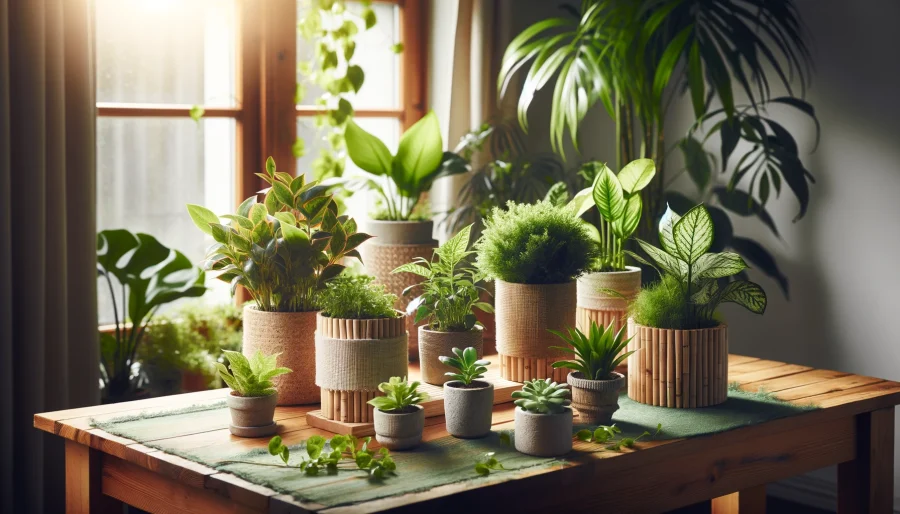
Small space gardening offers numerous benefits such as accessibility to fresh vegetables and herbs, the joy of gardening in urban settings, and the ability to utilize sunlight efficiently for plant growth.
Urban gardening doesn’t require vast open spaces; a balcony, patio, or windowsill can transform into a thriving green oasis.
The therapeutic effect of nurturing plants in limited spaces is well-documented, reducing stress and enhancing well-being.
Utilizing pots and containers allows for flexibility in positioning and easy maintenance, making it ideal for beginners and those with limited gardening experience.
Small space gardening enables the cultivation of microgreens, packed with nutrients and quick to grow, providing a fresh, healthy addition to meals.
What Are The Challenges Of Small Space Gardening?
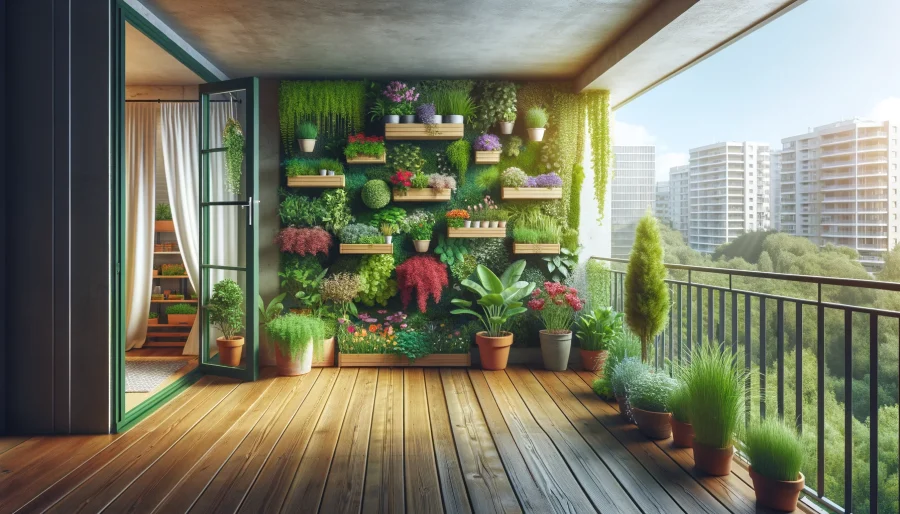
Small space gardening presents challenges such as limited space for growing crops like tomatoes, kale, lettuce, and radishes, requiring creative solutions to maximize productivity.
One common obstacle in small space gardening is the growth restriction when cultivating plants like tomatoes, which necessitates ample room for roots to spread out and access nutrients.
To overcome this, utilizing vertical planters or trellises can efficiently support the tomato plants while utilizing the vertical space effectively.
Similarly, leafy greens such as kale and lettuce thrive in shallow containers but require space for their foliage to spread.
Utilizing hanging baskets or tiered plant stands can help optimize space for these crops without compromising their growth.
Another innovative approach for small space gardening is implementing square foot gardening techniques, where crops are planted in a grid system, maximizing the planting area and ensuring efficient use of available space.
This method is particularly beneficial for growing radishes, which have shallow roots but still need adequate space between plants for optimal growth.
How To Overcome Limited Space?
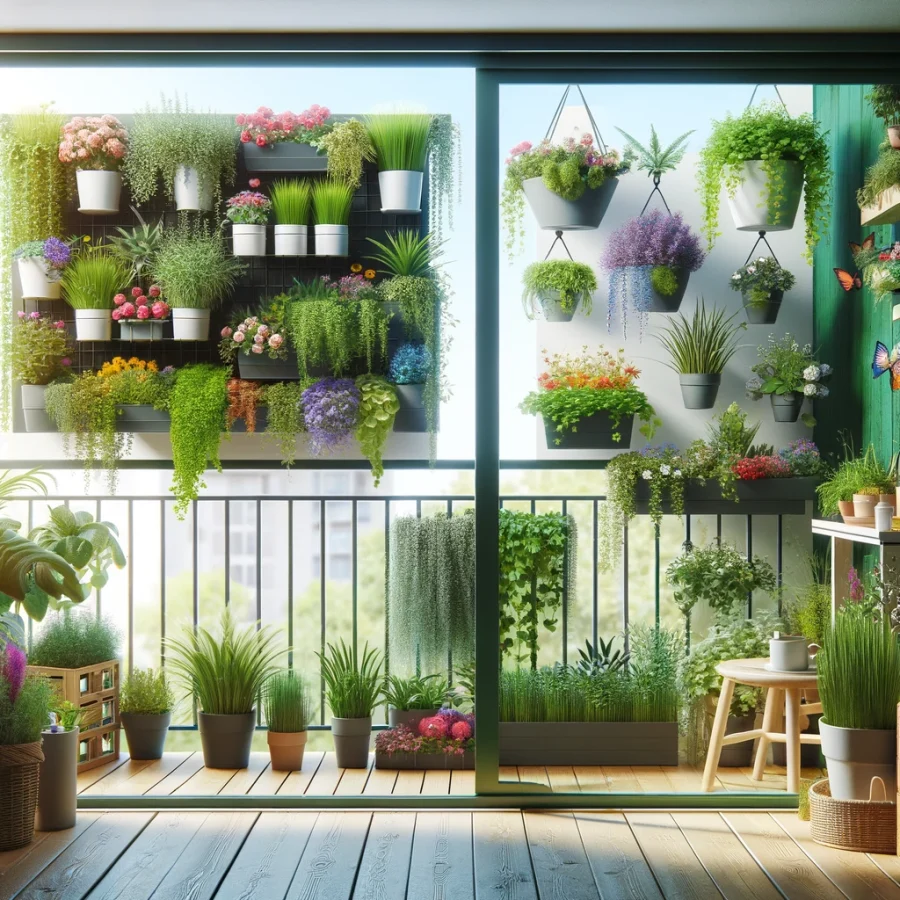
To overcome limited space in small space gardening, consider utilizing vertical gardens, raised beds, compact plant varieties, and strategic planting arrangements such as hedges or trellises.
Vertical gardens are excellent options for maximizing space vertically, allowing you to grow an abundance of herbs and flowers without taking up much ground space.
Consider incorporating hanging planters or wall-mounted planters to add greenery to your walls or fences.
Raised beds offer various benefits such as better soil drainage, easier access for planting and maintenance, and the ability to control soil quality.
They are ideal for growing a wide range of vegetables, flowers, and herbs in a confined area.
Opt for compact plant varieties that thrive in small spaces, such as dwarf fruit trees, bush tomatoes, or mini herbs.
These plants not only save space but also provide a high yield of produce.
Create strategic planting layouts by grouping plants with similar watering and sunlight needs together.
Use containers, hanging baskets, or tiered plant stands to add layers and diversity to your garden while utilizing every inch of available space.
What Are The Types Of Small Space Gardening?
Small space gardening encompasses various types such as container gardening, vertical gardening, windowsill gardening, and raised bed gardening, each offering unique approaches to cultivating plants in restricted areas.
Container gardening involves growing plants in various containers like pots, buckets, or hanging baskets. It is versatile and allows for easy mobility of plants.
Vertical gardening utilizes vertical space by growing plants on walls with pocket planters or trellises, making it ideal for maximizing space.
Windowsill gardening is perfect for those with limited outdoor space, utilizing windowsills for plant cultivation.
Raised bed gardening involves planting in raised beds, offering better soil control and reduced bending for garden maintenance.
Container Gardening
Container gardening involves cultivating plants, herbs, and vegetables in pots or containers, making it an ideal choice for small spaces and urban environments where traditional gardening may not be feasible.
One of the key advantages of container gardening is its versatility, allowing individuals to grow a wide range of plants even in limited areas.
Herbs such as basil, mint, and parsley thrive well in containers, providing fresh flavors for culinary use.
Vegetables like cherry tomatoes, peppers, and small varieties of squash can also be successfully cultivated in pots.
Container gardening enables the easy cultivation of salad greens such as lettuce, arugula, and spinach, adding a vibrant touch to any urban setting.
With the right potting mix and proper care, container gardens can flourish with diverse plant life.
Vertical Gardening
Vertical gardening involves cultivating plants vertically using structures like trellises or vertical towers, enabling gardeners to maximize space and grow a variety of plants even in confined areas.
By utilizing vertical space, gardeners can create a lush green environment while also enhancing aesthetics.
Trellises offer sturdy support for climbing plants like tomatoes and cucumbers, promoting efficient growth and making harvesting easier.
Vertical towers, on the other hand, provide individual pockets for planting herbs, flowers, or even strawberries, giving each plant its space to thrive.
The strategic placement of these structures allows for proper sunlight exposure, enhancing photosynthesis and overall plant health.
This innovative approach to gardening not only saves space but also adds a unique visual appeal to any outdoor or indoor area.
Windowsill Gardening
Windowsill gardening involves growing herbs, flowers, or small plants on window ledges, making it a charming and practical way to incorporate greenery and gardening into small living spaces.
One of the major attractions of windowsill gardening is its convenience for urban dwellers and anyone with limited outdoor space.
The direct access to sunlight through the window provides an ideal growing environment, especially for sun-loving plants.
Light exposure is crucial in windowsill gardening, with south-facing windows typically receiving the most sunlight.
It’s important to select plants that thrive in these conditions, such as basil, mint, succulents, or geraniums.
Plant placement also plays a key role; taller plants should be positioned at the back while shorter ones can be at the front, ensuring each receives adequate light.
Raised Bed Gardening
Raised bed gardening involves planting in elevated beds filled with soil, offering improved drainage, soil quality, and planting convenience for small space gardeners.
One of the key benefits of raised bed gardening is the ability to create a controlled environment that promotes healthy plant growth.
By elevating the soil level, gardeners can have better control over the soil composition and nutrient content, leading to optimal conditions for plant development.
In addition, the raised structure allows for better water drainage, preventing issues such as waterlogging that can hinder plant growth in traditional ground-level gardens.
Properly constructed raised beds also help to keep out weeds more effectively, reducing the competition for nutrients among plants.
Proper planting techniques and soil preparation are crucial for the success of a raised bed garden.
Gardeners should ensure that the soil is well-aerated and nutrient-rich by incorporating compost and organic matter.
This promotes a healthy root system and overall plant vitality.
The elevated nature of raised beds makes it easier for gardeners to tend to their plants without the need for excessive bending or kneeling, making it a more accessible and enjoyable gardening experience.
What Are The Essential Tools For Small Space Gardening?
Essential tools for small space gardening include watering cans, pruning shears, hand trowels, and plant markers, facilitating efficient care and maintenance of herbs, vegetables, and plants in limited areas.
Plus these essential tools, having a sturdy garden hose with a nozzle attachment is crucial for convenient watering, ensuring that your plants receive the right amount of moisture.
- A soil moisture meter is handy for monitoring the moisture levels in pots or containers, helping you avoid overwatering or underwatering your plants.
- Plant scissors are essential for precise pruning, ensuring healthy growth and shape maintenance.
Regarding plant care, these tools play a vital role in promoting the flourishing of your small-space garden.
How To Choose The Right Plants For Small Space Gardening?
Selecting the right plants for small space gardening involves considering the available space, choosing herbs, vegetables, or compact plant varieties that thrive in confined areas, and planning for efficient planting arrangements.
When dealing with limited space in gardening, it’s essential to prioritize plants that not only fit in the area but also maximize its potential.
Plant adaptability plays a crucial role in this decision-making process.
Opt for species that can thrive in containers or have shallow root systems, such as cherry tomatoes, arugula, or dwarf varieties of peppers.
- Herbs like basil, mint, or chives are versatile choices that can flourish in small pots on windowsills or balconies, adding both flavor and greenery to your surroundings.
- Regarding vegetables, opt for compact varieties of cucumbers, radishes, and kale that can be easily grown in raised beds or vertically along trellises to maximize vertical space.
- Consider plants that serve multiple purposes, like ornamental edibles such as colorful Swiss chard or edible flowers like nasturtiums, combining beauty with functionality in your small garden.
Consider The Space Available
When choosing plants for small space gardening, consider the available sunlight, space constraints, and the specific requirements of herbs, vegetables, or plants you intend to grow.
For areas with ample sunlight, opt for sun-loving plants such as tomatoes, peppers, or lavender that thrive in direct sunlight for at least 6-8 hours daily.
- Optimizing the available space is crucial for small gardens; consider vertical gardening with climbers like beans or vertical planters for a space-efficient herb garden.
- For shaded areas, focus on shade-tolerant plants like mint, ferns, or hostas, ensuring they receive enough filtered light for healthy growth.
Choose Plants That Thrive In Small Spaces
Opt for plants that flourish in small spaces, such as herbs, compact vegetables, and companion plants that complement each other’s growth requirements and space utilization.
When selecting plants for a small space garden, it’s essential to consider their compatibility with one another.
For instance, pairing nitrogen-fixing plants like beans with heavy feeders such as tomatoes can create a harmonious balance by providing nutrients and support.
Incorporating climbing plants like beans or cucumbers can make use of vertical space efficiently, maximizing your garden’s yield.
By practicing companion planting, you can enhance crop health, deter pests, and promote overall garden productivity within limited areas.
Opt For Compact Varieties
Choose compact plant varieties for small space gardening to maximize yield and space efficiency, focusing on herbs, vegetables, and salad greens that are well-suited for confined areas.
By opting for compact plants, gardeners can create thriving gardens even in limited spaces, such as balconies, patios, or windowsills.
These smaller plants not only produce ample harvests but also allow for efficient space utilization, ensuring no area goes to waste.
Compact Plants Are Often Labeled As Bush Varieties
- Compact varieties are ideal for vertical gardening systems, hanging baskets, and small raised beds, making them versatile options for urban dwellers or anyone with restricted gardening space.
- Not only do these plants provide a bountiful supply of fresh produce, but they also add aesthetic appeal to any small garden, enhancing the overall look and feel of the space.
What Are Some Creative Ideas For Small Space Gardening?
Creative ideas for small space gardening include using hanging baskets, vertical towers, recycled containers, and herb spirals to maximize plant growth and add aesthetic appeal to limited gardening spaces.
One of the innovative concepts gaining popularity in small-space gardening is the use of vertical towers.
These towers allow gardeners to utilize vertical space efficiently, ideal for apartments or small yards.
Incorporating recycled materials for gardening not only promotes sustainability but also adds a unique touch to the garden.
Herb spirals, a clever design that combines various herbs in a spiral pattern, provide both functionality and visual interest, making them a favorite amongst urban gardeners.
Exploring these ideas opens up endless possibilities for creating a thriving garden in limited spaces.
Use Hanging Baskets
Utilize hanging baskets for small space gardening to grow plants, flowers, and herbs in elevated positions, maximizing sunlight exposure and adding a vertical dimension to your garden.
One of the key benefits of using hanging baskets for small space gardening is the ability to cultivate a wide variety of plant species that thrive in elevated settings.
Flowering plants, such as petunias, fuchsias, and begonias, add a colorful and vibrant touch to your garden, enhancing its visual appeal.
Additionally, herbs like basil, mint, and parsley are well-suited for hanging baskets, providing fresh ingredients for culinary use right at your fingertips.
By suspending plants in hanging baskets, you can ensure they receive optimal sunlight exposure throughout the day, promoting healthy growth and blooming.
The vertical positioning not only saves valuable ground space but also allows for better air circulation around the plants, reducing the risk of diseases and pests.
Utilize Vertical Space
Maximize vertical space in small space gardening by utilizing trellises, vertical towers, or plant shelves to grow a diverse range of plants, especially compact varieties that thrive in confined areas.
Vertical gardening offers numerous advantages for those looking to make the most out of limited space.
By incorporating vertical structures such as trellises and towers, gardeners can effectively utilize overhead space that would otherwise go unused.
These structures not only maximize the number of plants that can be grown but also create an aesthetically pleasing vertical garden display.
In addition, the use of compact plant varieties is essential for successful vertical gardening.
These plants are specifically bred to thrive in small containers or confined spaces, making them ideal for vertical growth.
Their adaptability to limited root space and their ability to flourish in tight conditions make them perfect candidates for vertical gardening projects.
Plant In Repurposed Containers
Repurpose containers like tin cans, plastic bottles, or wooden crates for small space gardening, creating a recycled garden that promotes sustainability and adds a unique touch to your gardening space.
Using repurposed containers not only reduces waste but also allows for a creative gardening approach that brings a sense of eco-consciousness to your living space.
Sustainable gardening practices like these provide an opportunity to grow a variety of plants in unconventional yet charming vessels, enabling individuals to cultivate herbs, flowers, and even small vegetables in limited space.
When selecting plants for these upcycled containers, consider options that thrive in compact environments or have shallow root systems, such as herbs like basil and mint, succulents, or dwarf varieties of tomatoes and peppers.
This deliberate choice of plants ensures successful growth and maintenance within the constraints of these recycled containers.
Create A Miniature Garden
Craft a miniature garden in small spaces by combining plants, herbs, and flowers in a compact arrangement, creating a charming and visually appealing green oasis within a limited gardening area.
When designing a miniature garden, it’s essential to consider the size and growth patterns of the plants to ensure they thrive in a confined space.
Plant diversity plays a crucial role in adding texture and interest to your mini landscape; mix and match varying foliage shapes, colors, and heights for a dynamic composition.
Incorporating cascading plants like creeping fig or trailing ivy can add vertical interest and soften the edges of containers.
Don’t shy away from experimenting with different pot sizes and shapes to accentuate the aesthetics of your garden.
Grow Herbs And Vegetables Indoors
Engage in indoor gardening by growing herbs, vegetables, and microgreens in pots or containers, transforming limited indoor spaces into thriving green environments for culinary delights.
Indoor gardening offers a convenient solution for those lacking outdoor space but still craving fresh produce at their fingertips.
With the right set-up, you can create your own mini garden indoors, providing not only a visually appealing touch to your living space but also a sustainable source of flavorful ingredients for your cooking adventures.
By utilizing pots for plant growth, you can easily control the environment, ensuring your plants receive adequate sunlight, water, and nutrients.
This method allows you to cultivate a variety of plants simultaneously, enhancing both the aesthetic appeal and functionality of your indoor garden.
Small Space Gardening Solutions FAQs
Welcome to the FAQ section! Here, we’ve compiled some common questions about small space gardening to help you navigate and succeed in your gardening journey.
Whether you’re a beginner or looking to expand your knowledge, you’ll find valuable insights and tips to make the most of your limited gardening space.
Q. What are some benefits of small space gardening solutions?
A. Small space gardening solutions allow you to grow your own fresh produce even if you have limited outdoor space. It also promotes a sustainable and eco-friendly lifestyle, as well as provides a stress-relieving hobby.
Q. What are some common challenges of small space gardening?
A. Some common challenges of small space gardening include limited space for plants to grow, lack of natural sunlight, and difficulty in maintaining proper soil moisture and nutrients.
Q. What are some creative ways to maximize small space for gardening?
A. You can utilize vertical gardening by using hanging baskets or wall-mounted planters. You can also use repurposed items such as old pallets or tin cans to create makeshift planters. Additionally, try companion planting by growing plants that benefit each other in the same container.
Q. What types of plants are suitable for small space gardening?
A. Leafy greens, herbs, and compact vegetables like cherry tomatoes and peppers are ideal for small space gardening. You can also consider dwarf varieties of fruits such as strawberries or blueberries.
Q. How can I ensure proper drainage in my small space garden?
A. Adequate drainage is crucial for any garden, especially in small spaces. To ensure proper drainage, use containers with drainage holes, add a layer of gravel at the bottom of the container, and use well-draining potting soil.
Q. Can I use organic methods for small space gardening?
A. Yes, organic gardening methods can be used for small space gardening as well. You can use natural fertilizers and pest control methods, and even start a compost bin to create nutrient-rich soil for your plants.
Conclusion: Embracing Small Space Gardening Solutions
Small space gardening solutions unlock endless possibilities for those with limited outdoor areas.
By utilizing creative techniques like container gardening, vertical gardening, and windowsill gardening, you can turn even the tiniest spaces into vibrant green sanctuaries.
Grow Your Own Oasis
These innovative solutions empower you to cultivate fresh produce and stunning plants right at home.
They offer a fulfilling and eco-friendly pastime, allowing you to connect with nature and enjoy the rewards of gardening, regardless of space constraints.
Read more: Backyard Gardening: A Comprehensive Guide
Transform Any Space
Whether you have a compact balcony, a cozy patio, or just a windowsill, small space gardening is an excellent way to infuse your living space with natural beauty.
Embrace this approach to experience the joys of gardening in any setting.
Related Content
Visit my Amazon Influencer Page for videos and gardening products Grow Your Own Garden














